During my recent discovery of the city of Angers, I was amazed by the majestic castle of the Dukes of Anjou and its 17 imposing towers in schist and limestone. Fascinated by the Apocalypse tapestry , treasure of the place, I tell you today its story rich in twists and turns...
A family of patrons
We often forget that the XIV th century, marked by the Hundred Years War, is also that of a prodigious artistic and cultural expansion . King Jean II le Bon transmitted the love of splendor and the arts, characteristic of the Valois, to his descendants. His eldest son Charles V ascended the throne in 1364. He devoted his reign, one of the most fruitful of the Middle Ages, to restoring the prestige of France, putting an end to the first part of the Hundred Years War. This prestige passes through Art in all its forms. Charles is an artist king and a builder king, who profoundly transformed the capital and the daily life of the royal family:a true French way of life is being born.
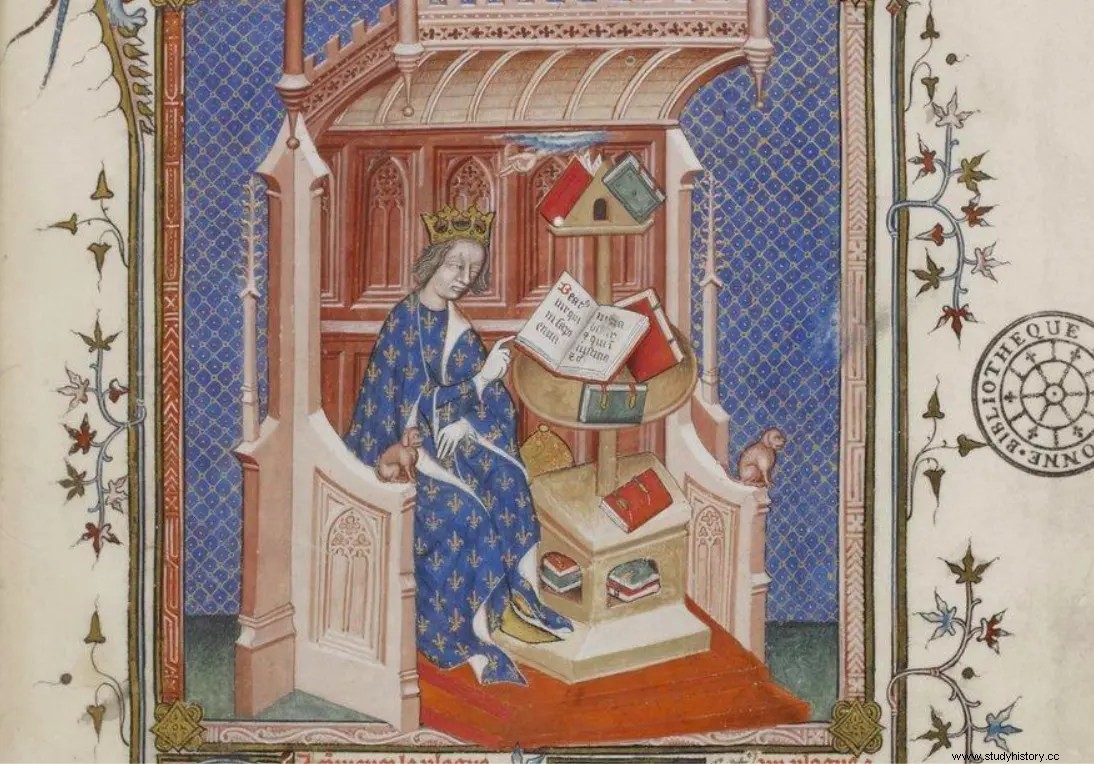
The princely orders of luxury items testify to the power and wealth of their sponsors. Charles V, deeply bibliophile, was the first royal library , which he installed in the Louvre. The illuminators, then at the height of their art, created veritable works of art for him. The king's brothers are also great patrons. Jean, Duke of Berry , is a keen collector of books of Hours . As for Louis, Duke of Anjou , he is passionate about goldsmithery and tapestry…
A "beautiful carpet" for the Duke of Anjou
Low and high warp tapestry, encouraged by the princes of France, experienced tremendous growth. Around 1375, Louis I st d'Anjou decides to commission a series of tapestries from Nicolas Bataille , renowned licer employed by Charles V and by the greatest lords of the Court.
The upholsterer needs models, what we call cartons . This first important step is entrusted to the great Jean de Bruges , painter to the king, and his studio. It is therefore a quality team that is busy giving life to the "beautiful carpet" of the Duke of Anjou, as he is often called in correspondence.
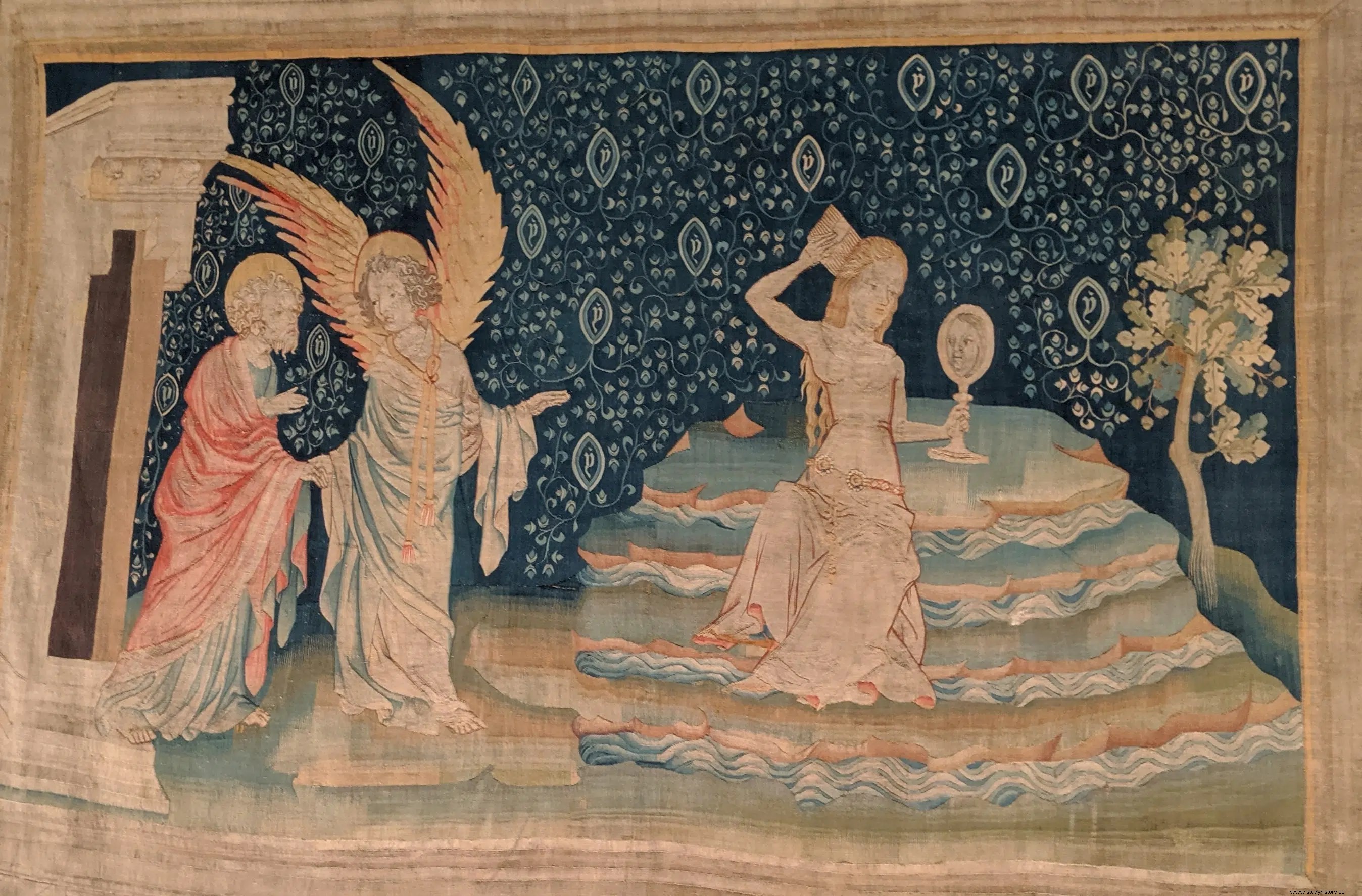
The subject chosen by Louis is that of the Apocalypse, the last book of the New Testament recounting the revelations of Jesus to John about how God's people will soon be delivered from evil. Interesting detail, the word Apocalypse, which is associated with chaos, destruction and end of the world, actually comes from the Greek and means the action of unveiling, of revealing!
For his cartoons, Jean de Bruges draws inspiration from illuminations (art that he practices himself) which adorn the precious works. Some are taken from the Royal Library, lent by Charles V to his brother.
A ceremonial work
It is then up to the wickers to take over, on a high warp loom (metal wire arranged vertically on a loom). They weave with wool dyed with natural pigments 84 panels composing a set of more than 140 meters long and 6 meters high , or 850m2! A colossal work completed in record time, between 1383 and 1389. The Apocalypse tapestry remains the oldest and largest collection of medieval tapestries preserved in the world.
Due to its immense size (it does not fit in any room of the castle of Angers, the fiefdom of the duke!) we know that the hanging has no use :unlike most tapestries of the Middle Ages, it is not intended to cover the walls to heat the rooms but to reflect the social status of the Duke of Anjou. It is a ceremonial work.
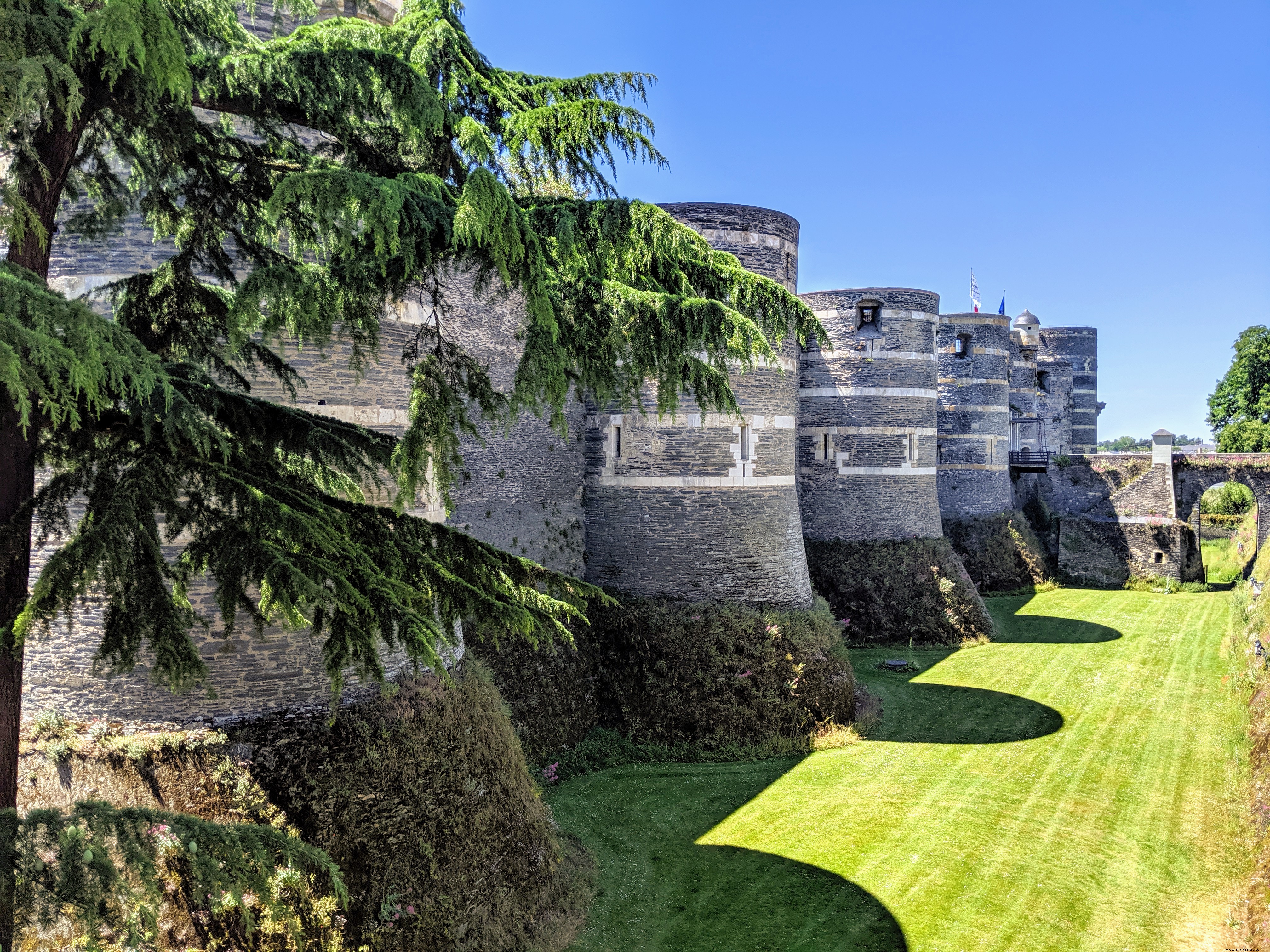
The weaving technique used confirms this function. This very rare technique of great finesse, known as “without reverse”, means that the tapestry is as beautiful on the front as on the back. No knots are visible. She was therefore destined to be admired on both sides! A peculiarity that will have happy consequences...
We take out the hangings for special occasions . In 1400, for example, it was displayed in the court of the Archdiocese of Arles on the occasion of the marriage of Louis II of Anjou to Yolande of Aragon.
Between portrait gallery and historical testimony
The weaving quality of the tapestry is extraordinary. The decorations are very rich and the ability to represent curves and volumes is striking. Faces are incredibly accurate , perfectly realistic and all different... And for good reason:the hanging presents one of the first manifestations of the art of the portrait, which is still in its infancy.
The very first independent painted portrait preserved since Antiquity is that of John II the Good , father of Charles V and Louis I st of Anjou, before his accession to the throne in 1350. It can be admired in the Louvre. We find the exact replica on the tapestry!
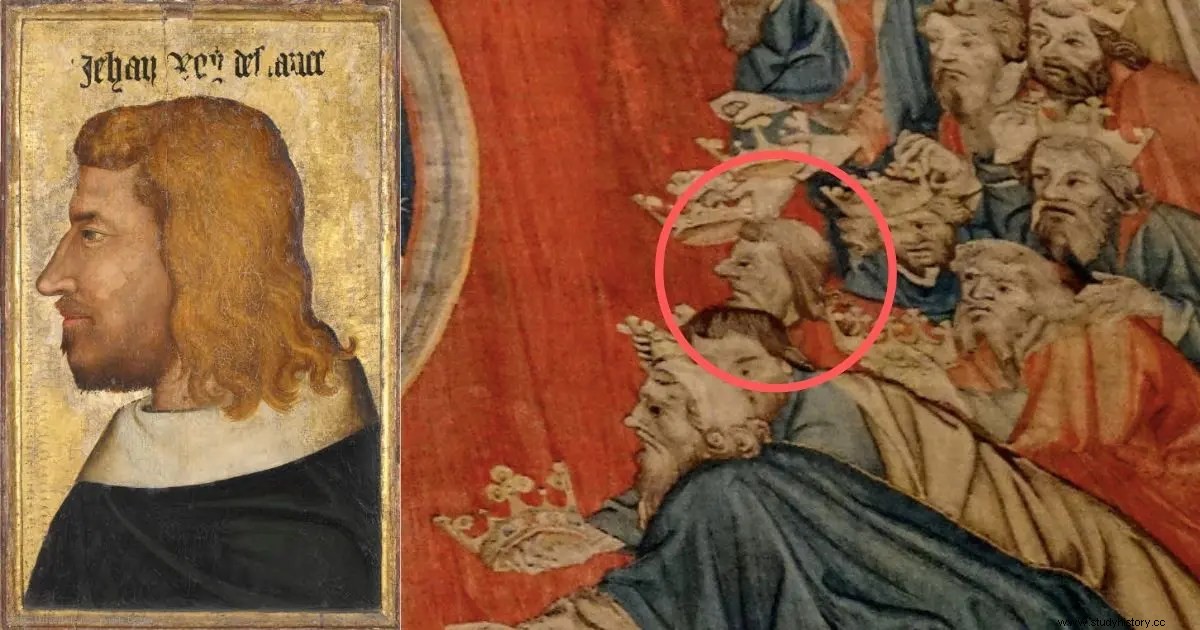
Jean II is not the only one to be represented:one of the great readers, these characters who announce a series of panels, is none other than a representation of the Duke of Anjou , the sponsor of the work.

The tapestry is thus a wonderful open book on the political context of the time , that of the Hundred Years War. When it does not offer the precise portrait of real characters, the hanging implies them by explicit attributes:the rose for the King of England Edward III, the helmet with white feathers for his eldest son nicknamed the Black Prince, etc…
A path strewn with pitfalls
Louis II of Anjou inherits the tapestry commissioned by his father. It then passes to the son of the latter, René, more commonly known as King René for he bears among his titles those of Duke of Anjou and King of Jerusalem. On his death, René bequeathed the tapestry to Angers Cathedral, which treasured it in its treasury.
She then experienced a period of dramatic abandonment. In the 18th century, the various panels of the tapestry were terribly abused. The Age of Enlightenment completely ignores the Middle Ages, whose artistic heritage is neglected. The works are piled up in the storerooms, like dusty old things. We use the pieces of the tapestry to cover the orange trees during the winter, we use them as linings for curtains or blankets for the horses!
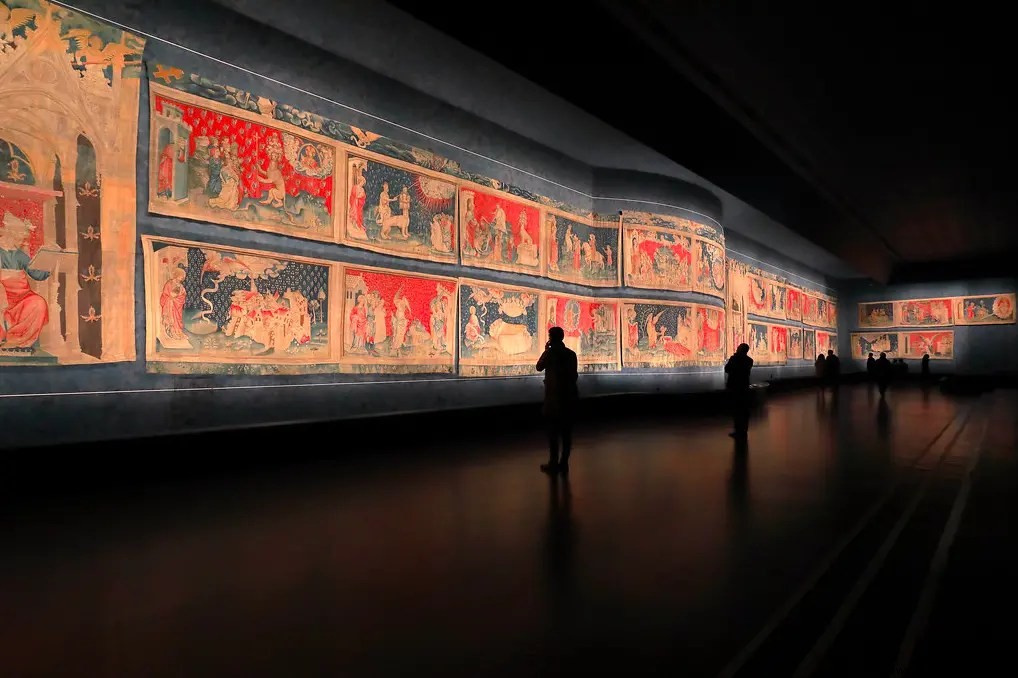
The novel "Notre-Dame de Paris" by Victor Hugo, published on March 16, 1831, aroused an immediate revival of interest in the Middle Ages. A few years later, Canon Joubert spotted the tapestry and was immediately aware of the value of his discovery. A long restoration job is engaged under his leadership.
Some damage is irreversible:parts are missing, destroyed forever, others are nothing more than fragments. Of the original 140 meters, there are still around a hundred, a real feat!
In the 1950s, a dedicated gallery to the tapestry of the Apocalypse is built within the walls of the castle of Angers. Everyone can now come and admire this masterpiece. If the visible side, initially exposed in poor conditions, has lost its shine, especially its yellow and green hues which are the most delicate, the hidden side reveals dazzling colors... Precious testimony to the richness of colors in medieval times!
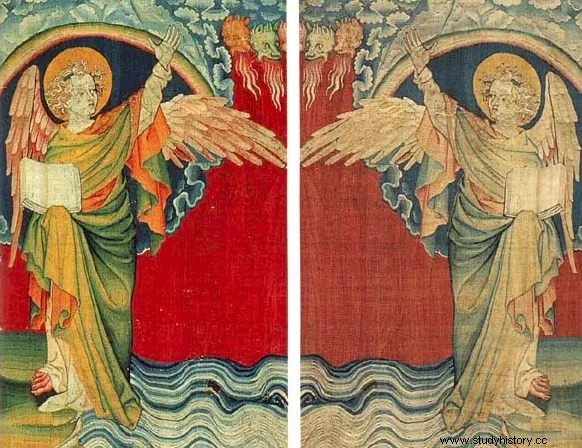
The curtain, however, remains fragile . These magnificent works of art were, at the time, not intended to last. This is why today, the slightest variation in temperature inside the building can cause irreversible damage. Gradually, over the years, certain details disappear... A jewel of medieval art all the more precious as it reminds us that everything is ephemeral!
